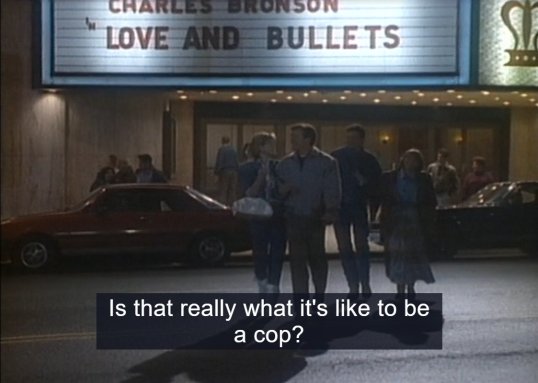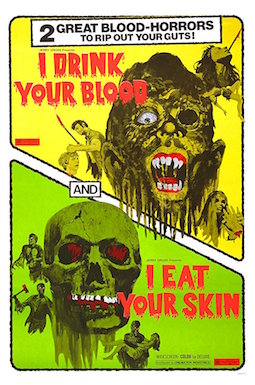Made for television in 1991 and possessing a rather unwieldy title, Shoot First: A Cop’s Vengeance tells the story of two friends in San Antonio in the early 80s.
Farrell Tucker (Dale Midkiff) and Stephen Smith (Alex McArthur) are both cops. They entered the police academy together, they graduated as a part of the same class, and they both hope to be partners while working to keep the streets of San Antonio safe. Tucker is laid back and friendly and not one to worry too much about following all of the regulations. Stephen Smith, on the other hand, is uptight and, at first, by-the-book. He grew up in a poverty-stricken, crime-riddled neighborhood and it left a definite impression on him. He hates crime and criminals but what he really can’t stand is a justice system that seems to be more concerned with the victimizers than with the victims. Tucker and Smith enjoy spending their time together, drinking at the local cop bars and practicing their shooting on the weekends. Tucker’s not much of a shot, whereas Smith is a sharpshooter who rarely misses.
At first, no one notices or even cares that some of San Antonio’s less upstanding citizens are getting gunned down in the streets. But when Smith somehow manages to be first on the scene to a series of shootings, it gets the attention of Internal Affairs. With Sergeant Nicholas (Terry O’Quinn) investigating the possibility of a cop-turned-vigilante and Chief Hogan (G.D. Spradlin) announcing that no one is above the law, Smith starts to get a bit paranoid and Tucker is forced to consider that his friend could very well be a murderer.
And, of course, Tucker’s right! The first scene features Tucker confronting Smith and then the majority of the film is told in flashback. Even if not for that narrative choice, one could guess at Smith’s guilt just from the title of the film. When Shoot First: A Cop’s Vengeance was released on home video, the title was changed to Vigilante Cop, which made Smith’s guilt even more obvious. Finally, some viewers will guess that Smith is guilty because the film is based on a true story. Officer Stephen Smith actually did go on a killing spree, gunning down men who he felt had escaped the law and even sending threatening letters to his chief when the latter announced that vigilante activity would not be tolerated. Officer Stephen Smith went from being a follower of the rules to someone who attempted to write his own rules. It’s an interesting story for anyone who wants to google it.
As for the film, it’s adequate without being particularly memorable. Alex McArthur and Dale Midkiff both give good performance as Tucker and Smith and the cast is full of talented people like Terry O’Quinn, G.D. Spradlin, Bruce McGill, and Lynn Lowry. Observant viewers will even notice a long-haired Jeremy Davies, showing up for a split-second. I liked the performance of Loryn Locklin, as the waitress who marries Smith and then discovers that her charming husband actually has some very serious issues. The main problem with the film is that the story moves a bit too slowly for its own good and some of the Texas accents were more than a little dodgy. If you’re looking for an action film, this won’t be for you, though the shootings are surprisingly graphic for something that was made for television. Shoot First: A Cop’s Vengeance is a rather routine telling of an interesting story.





